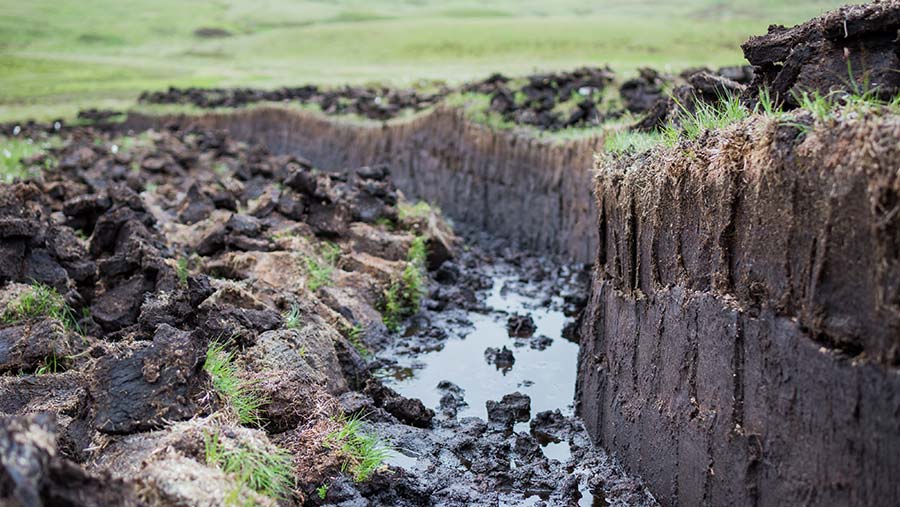Scottish government publishes peatland restoration advice
 © Vaclavkrizek/Adobe Stock
© Vaclavkrizek/Adobe Stock Farmers and landowners in Scotland have been offered new advice to help them access funding for peatland protection and restoration projects.
Healthy peatlands play a vital role in tackling climate change by locking in massive amounts of carbon, according to the online advice [PDF] launched by the Scottish government-funded Farm Advisory Service (FAS).
It quoted figures suggesting that more than 20% of Scottish soils were peat-based and stored 1.7bn tonnes of carbon.
See also: 15 fresh ideas for making money or cutting costs on farm
But about 80% of peatland north of the border is degraded and releasing potent greenhouse gases such as methane into the atmosphere.
Restoring peatland has, therefore, become critical to meeting Scotland’s target of net-zero emissions by 2045.
The FAS advice sets out how to navigate restoration projects and tap into carbon credits.
While peat is formed over thousands of years when waterlogged conditions prevent organic matter from decomposing, it can be protected and restored, the online advice says.
Relatively straightforward measures can be implemented on degraded peatlands.
For example, covering areas of bare peat with matting, vegetation and transferring sphagnum moss plants help to stabilise areas of bare peat.
To lock in the emissions, areas need to be saturated in a process known as rewetting.
This can also be achieved quite simply, according to the FAS guidance, by raising the water level through blocking drainage channels with peat/gravel dams or plastic piling/bunds.
Tree and scrub removal adds to the water retention of a degraded peatland site.
For severely degraded sites, more drastic action may be required, such as mechanical re-profiling to level the habitat.
Funding
Farmers can receive funding to help cover the cost of peatland restoration projects from bodies, such as through NatureScot’s Peatland Action fund.
Funding can also be combined with the International Union for Conservation of Nature (IUCN) Peatland Code, which allows eligible projects to sell carbon credits from the restoration.
And, following restoration, healthy peatlands can be carefully managed to provide additional financial returns such as low-intensity sheep grazing.
Lorna Cole, senior ecologist at SAC Consulting, teamed up with peatland experts from the East Ayrshire Coalfield Environment Initiative to produce the new guidance.
Dr Cole said: “How we view peatlands is changing. Instead of difficult to manage boggy bits, we are recognising peatlands for the wide range of benefits they provide.
“With emerging carbon markets, peatlands could be viewed as black gold.”
